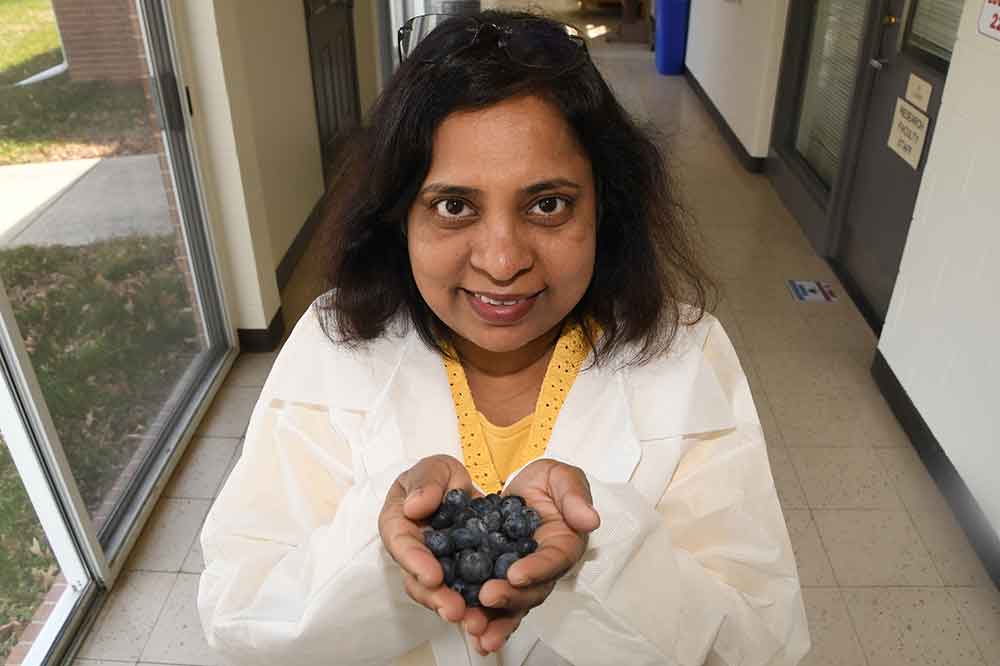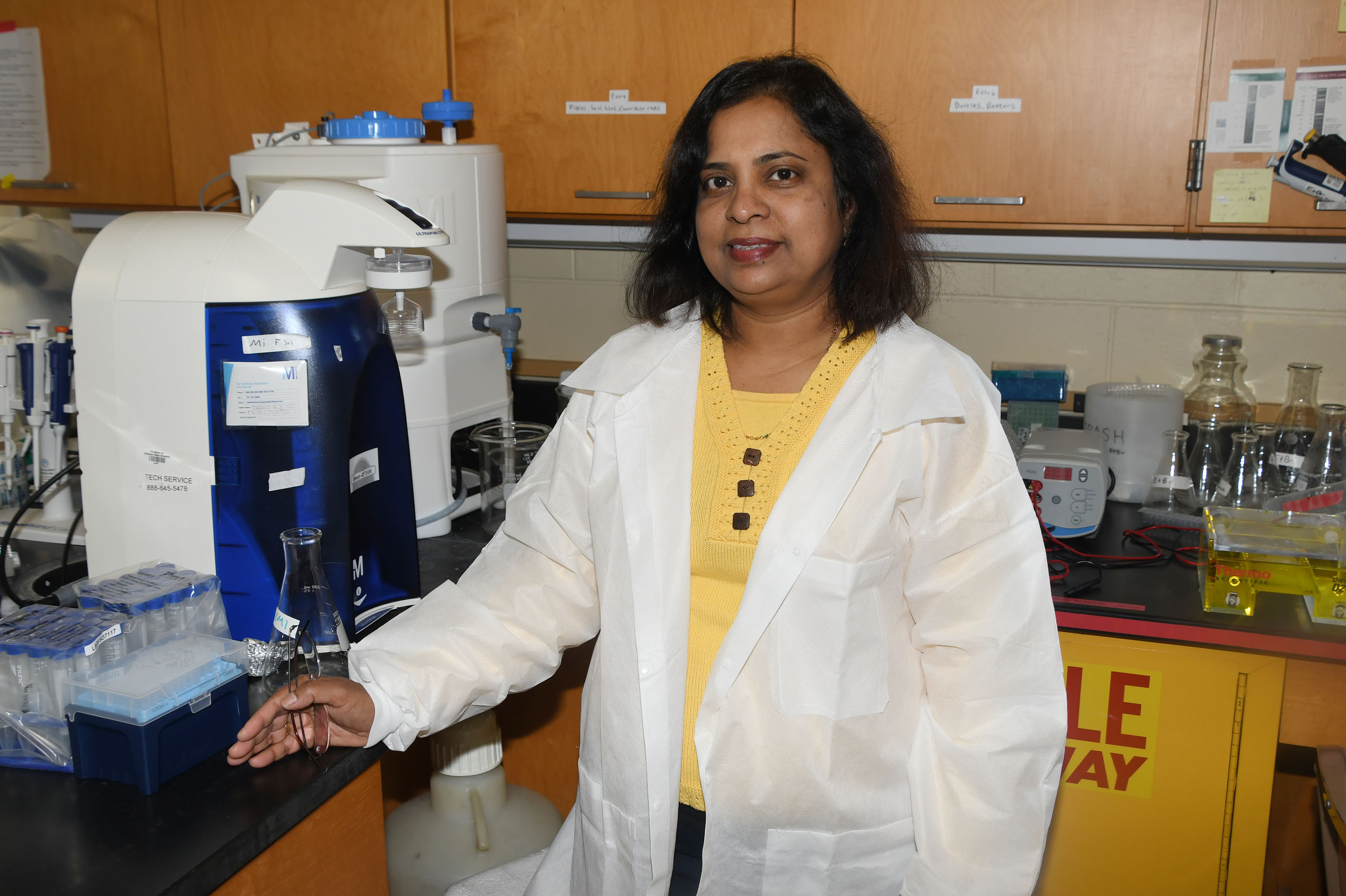
Dr. Melmaiee leads blueberry research team
The different species of blueberries cultivated for consumer use could be expanded as a result of research taking place at Delaware State University
Dr. Kalpalatha Melmaiee, Associate Professor in the Department of Agriculture and Natural Resources, is leading a research team of collaborators and students in a novel project to better understand previously unstudied wild blueberry species’ relationship to domesticated species.
Despite the documented and well-known health benefits of blueberries – which help slow down age-related complications such as hypertension, cardiovascular disease, insulin resistance and diabetes – only a relative few of the more than 200 species of blueberries plants are cultivated commercially. The absence of documented research on many other wild blueberry species has prompted Dr. Malmaiee to make this the focus of her study, which she began in 2017.
Her research has led to a paper entitled “Genomic and evolutionary relationships among wild and cultivated blueberry species,” which was published this year in BMC Plant Biology, a peer-reviewed journal that features research and academic articles on plant biology, including molecular, cellular, tissue, organ and whole organism research.
The study presented in the paper involved the investigation of the genomic and evolutionary relationships in 195 blueberry accessions from five species using single nucleotide polymorphisms (SNP) mined from genotyping-by-sequencing.
The high-density SNP analysis led to the discovery that one particular blueberry species from Nova Scotia, Canada, is an ancestor of the species studied and identifies genome regions that differentiated the domesticated and wild blueberries species of the study.
“Our study provides new insights into the evolution and genetic architecture of cultivated blueberries,” Dr. Melmaiee said. “Understanding the genetic lineage among different species helps better plan for future blueberry breeding programs.”
The research was partially funded by USDA-National Institute of Food and Agriculture grant support.
Dr. Melmaiee’s research and collaborator team includes:
- Byron Manzanero, Krishnanand Kulkarni, master’s degree and post-doctoral students, respectively, of the Department of Agriculture and Natural Resources, College of Agriculture, Science and Technology at Delaware State University.
- Dr. Sathya Elavarthi, Associate Professor in the Department of Agriculture and Natural Resources, College of Agriculture, Science and Technology at Delaware State University.
- Dr. Nicholi Vorsa, Professor Emeritus from Philip E. Marucci Center for Blueberry and Cranberry Research and Extension, Chatsworth, N.J.
- Dr. Massimo Iorizzo, Associate Professor from the Department of Horticultural Science and Plants, Human health Institute, North Carolina State University, Kannapolis, NC.
- Dr. Umesh K. Reddy and Dr. Purushothaman Natarajan from the Department of Biology, West Virginia State University, W.V.

